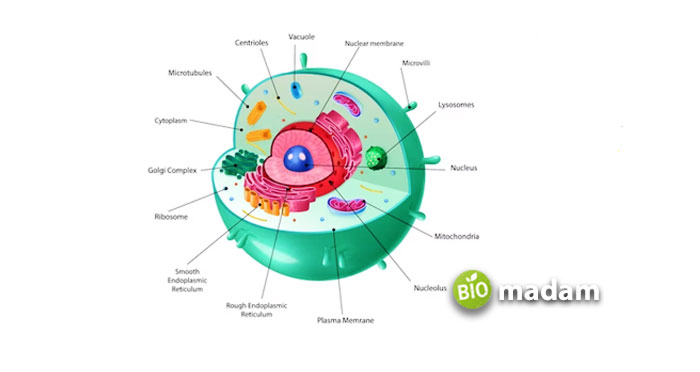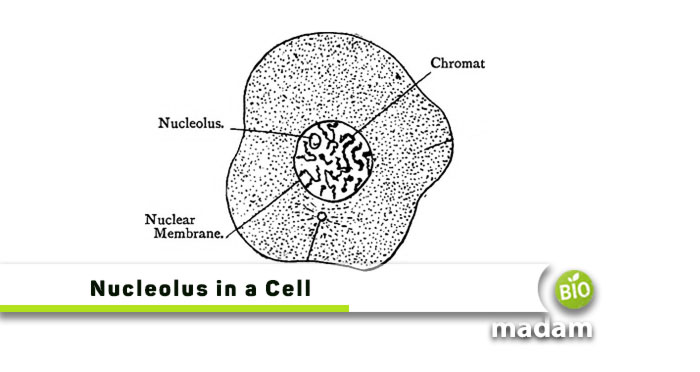Recently updated on June 1st, 2023 at 07:15 am
You might know the nucleolus as one of the parts of the cell or the nucleus, but do you know its function? The nucleolus contains the genetic material chromosome, or its condensed form, chromatin, and eventually is involved in its replication. However, this is not its only function. Let’s tell you everything about the nucleolus that you are looking for.
What is Nucleolus?
The nucleolus is one of the components of the nucleus in plant and animal cells. Besides the nucleolus, the nucleus also contains the nucleoplasm. The nucleolus is the most prominent part of the nucleus and contains DNA along with RNA and proteins. They are involved in producing and processing genetic material, playing a major role in body growth, development, and reproduction.
It is membrane-less and takes around 25% of the total volume of the nucleus. It produces subunits that ultimately contribute to the production of ribosomes.
Structure of Nucleolus
The nucleolus is a simple part of a eukaryotic cell, yet it has a well-ordered structure. It comprises three components that make up the nucleolar structure. These compartments play a distinct role in the production of ribosomes. Parts of the nucleolus are not properly visible under a microscope designed for students.
The three components of the nucleolus are:
Granular components: They have rRNA that forms ribosomes by binding to ribosomal proteins.
Fibrillar center: It is the main site of ribosomal protein production.
Dense Fibrillar components: It contains transcribed RNA that joins ribosomal proteins.
Nucleolar vacuoles: They are only found in plant cells.

Function of the Nucleolus
The nucleolus is known as the brain of the cell as it contains major components like DNA (Deoxyribonucleic acid and Ribonucleic acid) and is involved in the production of Ribosomes. Ribosomes are protein-producing factories, and hence nucleolus contributes to protein synthesis highly.
FAQs
What is nucleoplasm?
Nucleoplasm is the part of the nucleus besides the nucleolus. It is liquid in consistency and plays a major role in transporting material and maintaining the structure of the nucleus.
What is the function of the nucleolus in plant cells?
A plant cell has different organelles to perform their specified functions, including the mitochondria and ribosomes. Besides producing ribosomes and proteins, plant nucleolus is involved in metabolism, surveillance of mRNA, assembly, and transport of nucleolar RNAs. They often also contain nucleolar vacuoles in the center of the nucleolus. Plant cell nucleolus has a higher amount of iron compared to animal and human nucleolus.
How can you observe nucleolus?
Nucleolus can be easily observed through an electron microscope as compared to the compound microscope and studied by the technique of photobleaching followed by fluorescent recovery.
What is the function of the nucleus?
The nucleus in plants, animals, and other eukaryotes contains the nucleolus and nucleoplasm for specific functions. This tiniest structure has all the genetic information to help in reproduction, while rRNA and ribosomal proteins constitute ribosomes that produce proteins.
The Bottom Line
The nucleolus is an important part of the nucleus and contains all necessary importance for the production of ribosomes. The mRNA and ribosomal proteins present in the nucleus produce ribosomes that form proteins. The nucleolus is of high importance as ribosomes form proteins that are the body’s building blocks.

Hi, my name is Eva. I am currently practicing as a clinical social worker, that being my childhood desire. As a licensed therapist holding MPhil in Clinical Psychology, I am now on biomadam to provide the natives with the best family advice! Do you have any questions? See you in the comment section.

